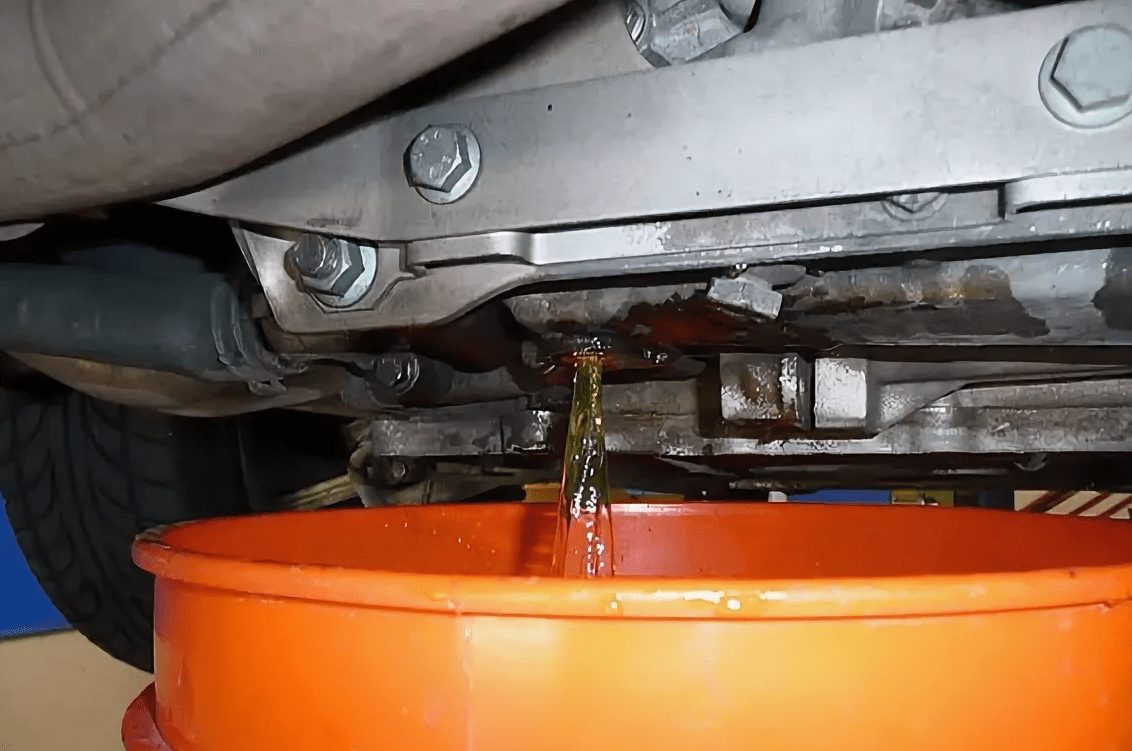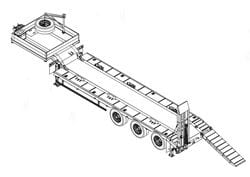
How to drain and replace coolant
Content
- Explanations and practical tips for cleaning and maintaining your motorcycle
Explanations and practical tips for cleaning and maintaining your motorcycle
5-step guide to properly cleaning your coolant
Coolant is essential for the proper functioning of the engine and must be changed regularly during simple but thorough work. We explain everything and in detail with this practical five step tutorial.
Coolant composition
Coolant coolant usually consists of water and ethylene glycol. There are different types and they are quite expensive. It is also an essential element for the proper functioning of a liquid-cooled engine. Let's get to know each other.
Of course, only liquid-cooled engines contain coolant. But you suspected it. In a motorcycle maintenance program, a coolant change is an operation usually performed every 2 years or about 24 km. The quality and adequacy of the fluid is important for the proper functioning of the engine and its durability.
Be careful, however, not all coolants are suitable for all motorcycles: motorcycles with magnesium housing require a special fluid, otherwise they will be damaged and weakened.
Coolant operation
Therefore, this famous coolant is composed of water and antifreeze agent to withstand high and low temperatures. Remember that liquid that heats up expands, and liquid that freezes also gains volume. In the first case, there is a risk of raising the engine under pressure and therefore putting strong pressure on the hoses and engine seals (including the cylinder head seal). Internal elements that get too hot can also degrade due to lack of good cooling. And that's bad. Very bad.
In the second case (gel), there is a risk of damaging the very structure of the engine. Ice has an unsuspecting power, capable of breaking engine casings, ripping hoses, and other joys. Therefore, we will avoid.
Cooling circulates in the motor through short circuit and long circuit. It also runs through the engine hoses. As the name suggests, its main function is cooling. It is also used to "support" the engine. It protects it from internal wear with a lubricating and anti-corrosion action. It also goes through the water pump, an element that shouldn't bond or stop working. Therefore, plain water cannot replace it, especially in winter.
If the coolant is worn out or "contaminated" by "internal" components, there is a risk of damage to the engine as well as the radiator, water pump and hoses. Thus, over time and use of the vehicle, the coolant loses its properties. Therefore, it is an excellent indicator of motor health.
The coolant level is checked by the radiator cap. In both cases, the level must be within tolerances, i.e. at the level of the radiator neck and between the low and high levels, graduated on the expansion tank. If you don't know where they are, take a look at the motorcycle technical review or your motorcycle repair manual.
Coolants and air: everything is bad
The cooling circuit rotates in isolation. It is under pressure as soon as the temperature rises. It is therefore important in many ways that the radiator cap is suitable and in good condition. Indeed, it retains "water" and delays evaporation in accordance with the internal temperature of the engine. The cover also prevents leakage. First of all, it prevents the radiator from exploding ...
Air in the cooling system causes temperature rise and poor fluid circulation. Result? The motorcycle heats up faster and, above all, heats up too much. There is one solution: eliminating bubbles. The procedure is the same as found when purging the cooling system. Who can do the most can do the least ...
Tutorial: Change Coolant in 5 Steps
Now that we know why, let's see how to replace the coolant. To do this, you will need:
- 2 to 4 liters of coolant suitable for your motorcycle
- enough to wipe up any liquid overflow
- funnel
- pool
- tools for disassembling the water pump hose and disassembling the radiator cap
- rigor and a little flexibility
First step: cold engine, cleaning the cooling system
Why is it cold? To avoid the risk of burns. Removing the cover of a hot engine requires exposure to a boiling geyser at nearly 100 ° C.
To do this, open the radiator cap. As with pouring the Petite Swiss, this allows the liquid to be spilled through a bleeding screw or a loose low hose for that occasion. If you choose a bleed screw, use a spare washer to ensure a perfect seal. Attention, some plugs are fixed with a screw, other covers are not implemented directly on the radiator.
After the chain is released, liquid can flow into the pool with a volume of about 5 liters.
Step 2: Dismantle and flush the expansion tank
If possible, as with our repaired Kawasaki motorcycle, empty and disassemble the expansion tank. However, if you haven't noticed the presence of molasses or "mayonnaise" in the vase, this is a good sign. This means that the cylinder head seal is in good condition. Good news in and of itself.
Flush the expansion vessel with large water. If it is not in good condition, it can be found, especially in Bir. On sports cars, there are vases behind the streamlined car. They can rub in the event of an accident. Think about it.
Third step: also clean the hoses
Also think about residual fluid in the hoses and underneath the engine. The hoses must be in good condition and free of surface breaks or hernias. They can be pressed to displace liquid.
After the liquid has been purged at best, it is time to reassemble the screws and / or hoses or even the expansion tank in the opposite direction of disassembly. We can move on to filling. Of course, the cap remains out of the way: we fill in this way.
Fourth step: filling with new coolant
As for the radiator cap, it should be in good condition, it is unnecessary to specify it. If you need to change it, there are many models available from aftermarket sellers, each with different pressures. Always select a pressure that is the same or higher than the original cap pressure. The more pressure-resistant the cover is, the higher the water temperature can rise inside the circuit.
Use a funnel to slowly pour new fluid into the chain to avoid air ingress. Don't fill too much at first and play Shadoks: pump the low hose to circulate the liquid. Repeat the level and repeat the operation as often as necessary until the liquid reaches the level of the neck.
Step five: heat up the bike to adjust the levels
Start the engine and let the motorcycle warm up. Raise the engine at about 4000 rpm. Typically a water pump activates and circulates fluid. Small bubbles should also rise in the neck of the radiator, and the level should drop more or less. Seal the lid.
Go to the side of the expansion tank. Pass the fluid level to the maximum. It is visualized with a line and a "Max" indication. Start the engine again and let it run. Turn it off after a while. The level is likely to drop again in the expansion vessel. This should be completed. Close the cover of the expansion tank. And it's all over!
Cooling system - additional checks
The cooling circuit also depends on the correct functioning of other elements: radiator, water pump, calostat and thermostat. The pump circulates water through the circuit and through the radiator. Therefore, the latter must have their internal channels in good condition, since water circulates there, as well as garlic in good condition.
If the appearance of the radiator is too poor or if too many fins are damaged and cannot be repaired, you can replace the radiator with a used model or a new model. In this case, several options are possible, and especially several quality levels. Select the declared OEM quality (original).
What if the radiator is leaking?
It may happen that the radiator has a more or less significant coolant leak. The gravel could be cleared or simply drowning could damage its integrity. Fortunately, there is one solution: leak stop fluid. It is poured into the cooling circuit through the cover and the seals leak after contact with air. Attention, this is not a preventive device, but only a medicinal product.
Budget: about 15 euros
Calorstat is the physical opening of a device at a given temperature. He then passes the hot liquid through. The thermostat is a probe that measures the temperature of the water and starts the fan. This radiator is designed for forced air circulation through the radiator. To find out more, we invite you to read the article on motorcycle engine overheating.
Remember
- Replacing the coolant is a simple but thorough operation.
- Choosing a very good quality fluid means choosing optimized refrigerant life and properties
- Correct bubble chasing and leveling helps to avoid overheating
- Check the fluid level regularly about the condition of the engine
Not to do
- Do not use standard magnesium body coolant; they will deteriorate and become porous.
- Continue driving if too much fluid leaks
- Bad tightening of the coolant cap
- Poor tightening of the expander cap
- Insertion hot engine
